Even on a hot summer day, I can go into the yard and pick a cucumber and bite into it and feel cooled and refreshed. How does that work?
There’s no other vegetable quite like a cuke. I need to have them in my summer garden. Here’s how I go about accomplishing that.
Varieties
I used to have trouble with my cucumbers being bitter, but I solved that by simply growing the right varieties. Some varieties of cucumbers are never bitter — no matter how hot the weather, no matter how imperfect your watering — so these are the only kinds I grow nowadays. Favorites include Green Fingers, Party Time, Summer Dance, and Sweet Slice.
(See my post on Green Fingers here. Also, see my post reviewing Summer Dance and Sweet Slice here.)
2025 was my first summer growing Party Time and, along with Green Fingers, I found that it makes a perfect snacking cuke for kids as it is small and spineless. Party Time also proved to be among the most productive and long-lived of the varieties I grew beside it.
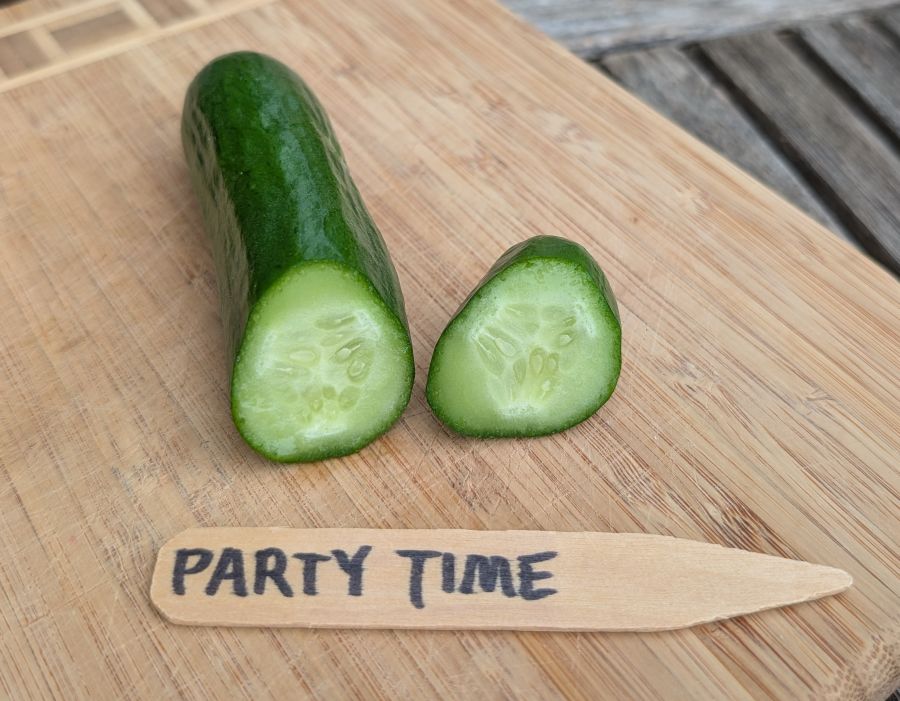

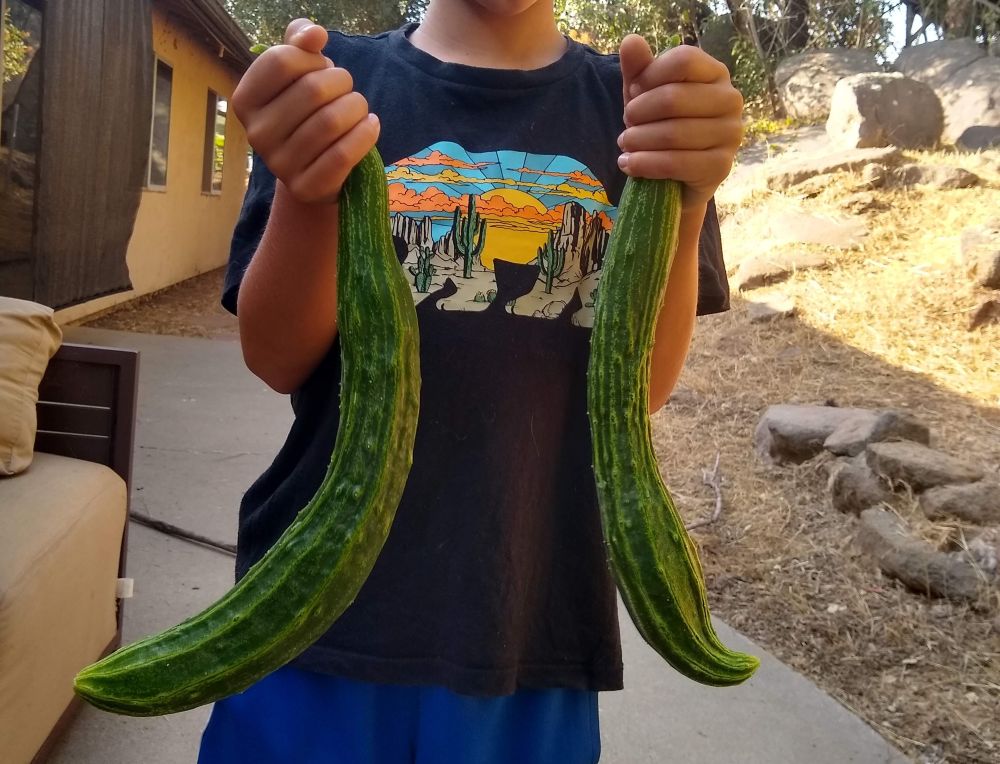
My family likes pickles so I also grow some other varieties for that. It doesn’t matter if those varieties taste bitter if eaten fresh because the pickling process removes that. For pickles I like the varieties Alibi and National Pickling. These can both be eaten fresh too, but their skin is thicker and more spiny.
Some cucumber varieties are not really cucumbers. True cucumbers are classified as Cucumis sativus, but there are similar plants classified as Cucumis melo (the same genus and species name as melons). Some call these cucumber-melons.
I have grown one such cucumber-melon, kindly sent to me by Jay of Cucumber Shop. The variety goes by the name Striped Carosello Leccese, or Meloncella Fasciata. It is apparently an old variety from Southern Italy. Here is a video of Jay talking about the variety.
My Striped Carosello Leccese plants grow well and produce well. The fruit is attractive with its stripes. It has no spines like some cucumbers do, but it does have fuzz on the skin. The texture is crisp and the flavor very mildly sweet. It also doesn’t have the sticky taste that cucumbers can have.
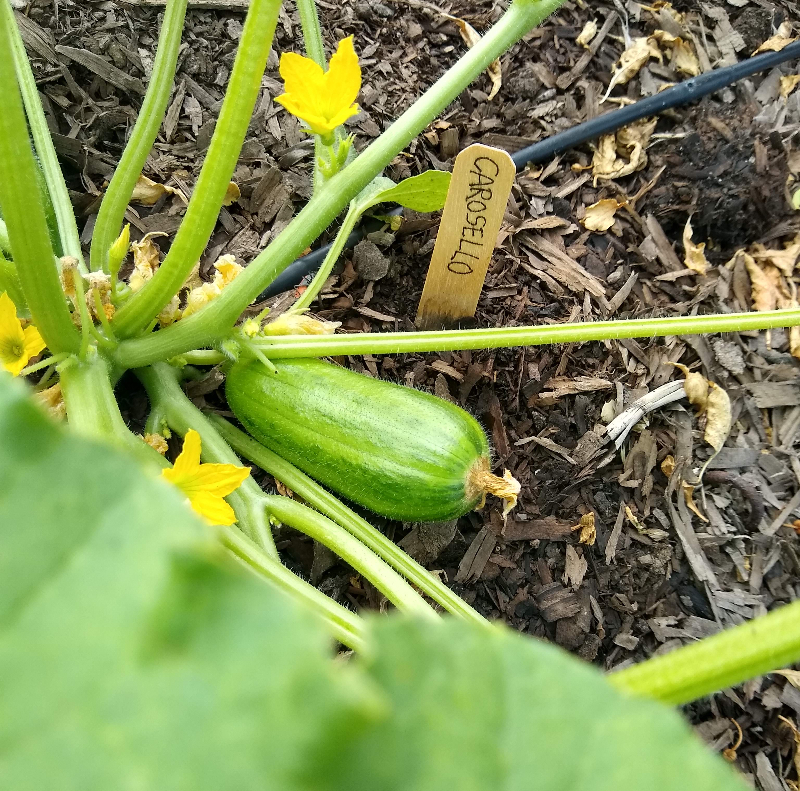
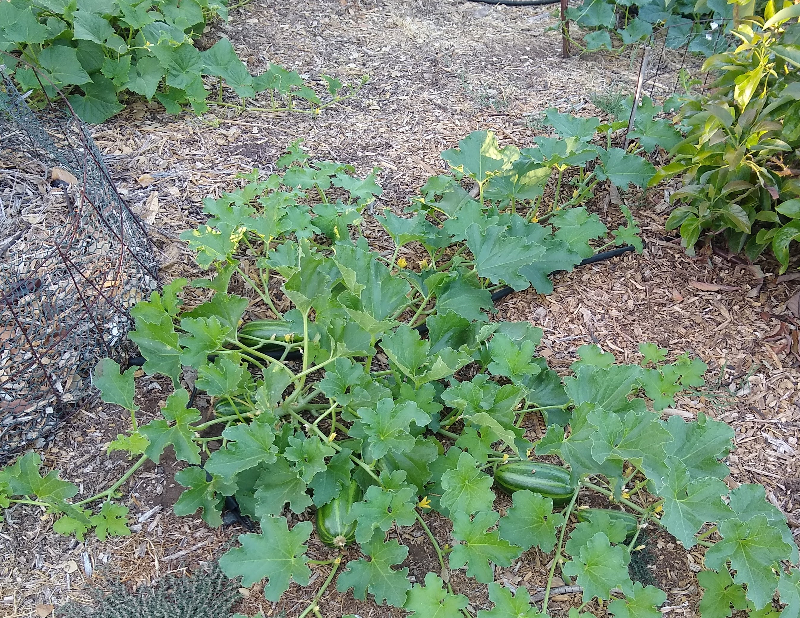
Watering and bitterness
I water cucumbers just like my other vegetables. (See this watering cheat sheet for tips.) And I water them amply so that they grow and produce well; however, as alluded to above, I no longer attempt to use watering as a way to avoid bitterness. That never worked for me despite the claims by some that bitterness in cucumbers is related to insufficient or “uneven” watering (a vague term that I find unhelpful).
I use variety choice to avoid bitterness, and that works.
If you do end up with bitter cucumbers, you can cut off the ends and peel them since the ends and the skin is where most bitterness accumulates.
Sowing and planting
Cucumbers like warm weather. They don’t grow through the winter well in Southern California. Plant them as early as April (sow them in containers indoors as early as March), and plant them as late as July (sowing in June). You can plant a bit earlier or later if you want to gamble on the weather, but April through July is reliable every year for me.
Here are some details about optimum air and soil temperatures for cucumbers and some information about the commercial growing practices in California.
Cucumber varieties differ in the size of their plants and vining tendency. Some are called “bush” types because they don’t run very far. But for most regular cucumber varieties a space of about 1.5 feet between plants is sufficient.
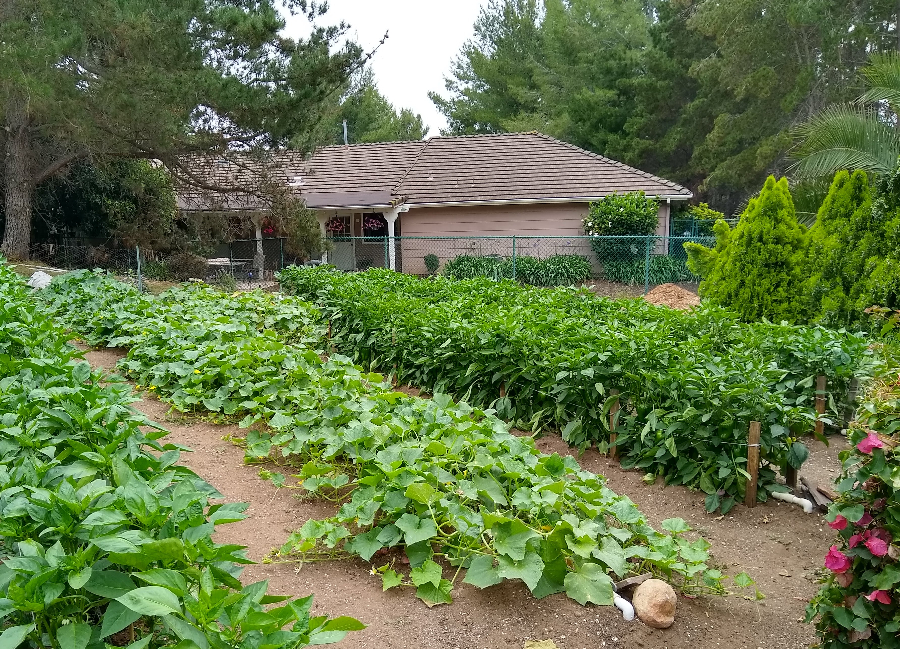
I usually don’t grow my cucumbers in a row with my other vegetables though. As with other vining plants like melons and pumpkins, I prefer to grow cucumbers under the south sides of my fruit trees since there’s more space for them to spread there. (See my post, “Growing vegetables under fruit trees.”)
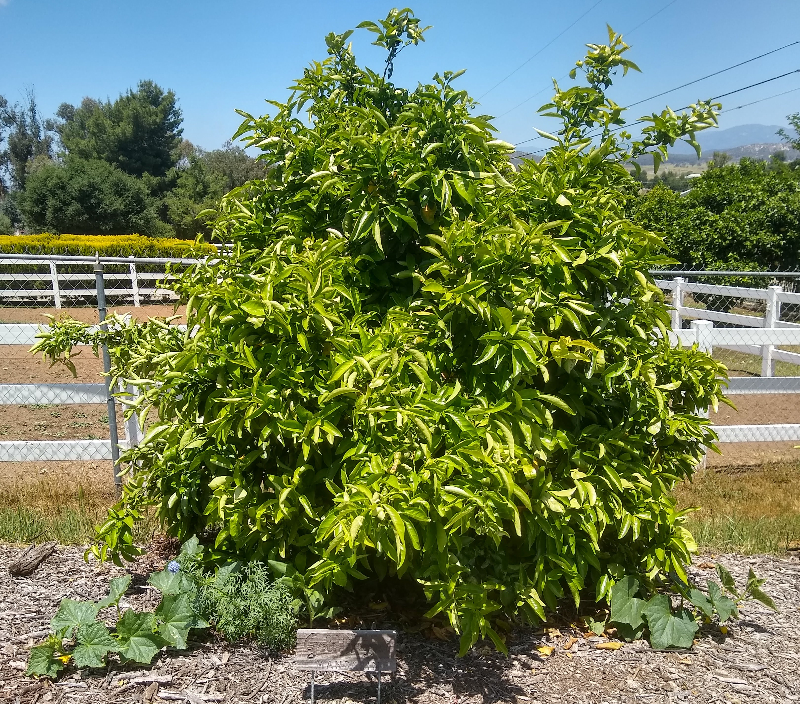
Supporting
Cucumber vines have tendrils and can climb. Giving them something to climb on has benefits: the cukes are easier to pick, they are less often munched by bugs, and it saves ground space.
Cucumbers can climb on string, a net, a tomato cage, a chain link fence, and an apple tree.
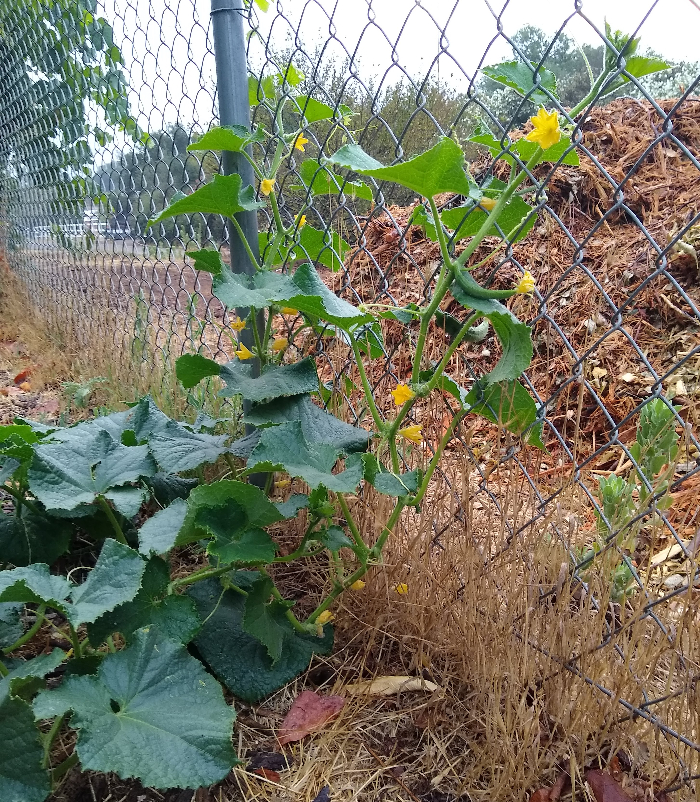
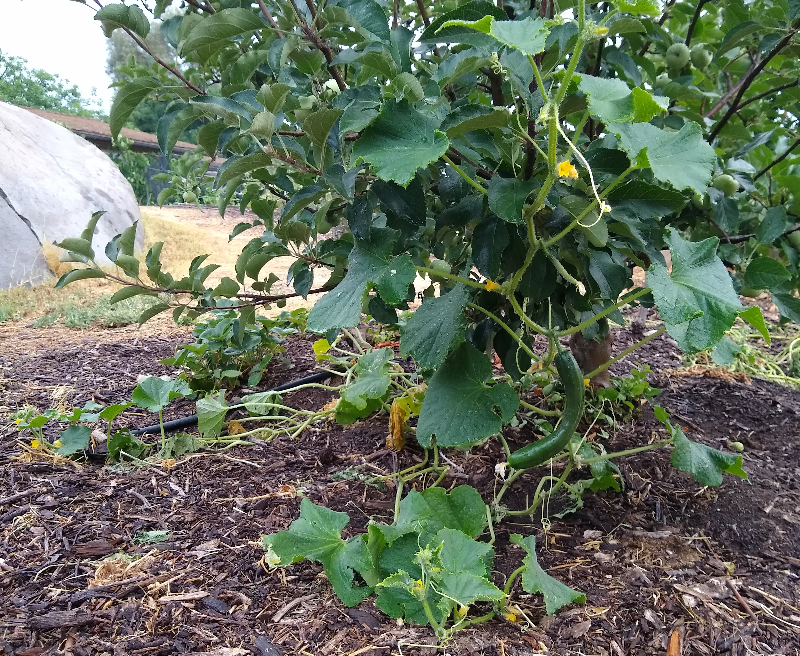
Pests and diseases
The main enemy of my cucumber plants in the past few years has been a microscopic creature that lives in the dirt: the root knot nematode. Cucumber roots are very susceptible to these tiny worm-like animals that cause the roots not to function well, and therefore hurt the plant growing above ground. (See my post, “What are root knot nematodes?”)
My main solution has been to not grow cucumbers where I know the dirt has root knot nematodes. I’m aware of no cucumber varieties with RKN resistance.
Lots of little insects bother cucumbers from time to time, such as aphids and whiteflies. There are concoctions you can buy to spray on these pests. I don’t spray but I do sometimes blast the plants with water to try to keep those insect populations down.
Powdery mildew also infects cucumbers. This fungus causes white spots on the leaves. There are concoctions you can buy to spray on powdery mildew also, but if you find this disease on your plants often you should first be sure to plant varieties that are resistant. Sweet-Slice and Summer Dance claim resistance to PM, and I’ve never seen it on those varieties in my yard.
Harvesting and storing
You can pick cucumbers when they’re only a couple inches long; they’re already crisp and tasty. My kids do this. Or you can wait until they’re six or more inches long – all varieties grow to different lengths. Just make sure you pick them before the skin yellows (except for lemon cucumbers, of course).
Fresh cukes store well in the fridge for over a week.
When your plant is pumping out more cukes than you can eat fresh, make some pickles. Easy pickle recipes are everywhere.

In summer, I like to make a bunch of little cucumber stacks for lunch by using mostly garden produce: tomato, avocado, cheese, basil, and . . .
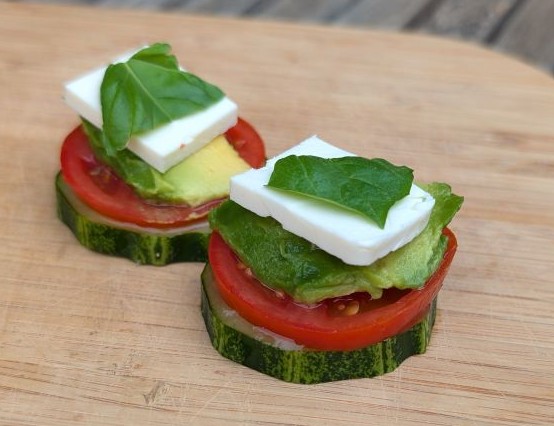
One day a few summers back, my son was watering some vegetables with me and asked, “Dad, what’s your favorite vegetable?”
“I don’t know,” I said.
“Mine is cucumbers,” he said.
Good choice, I thought. Good choice.
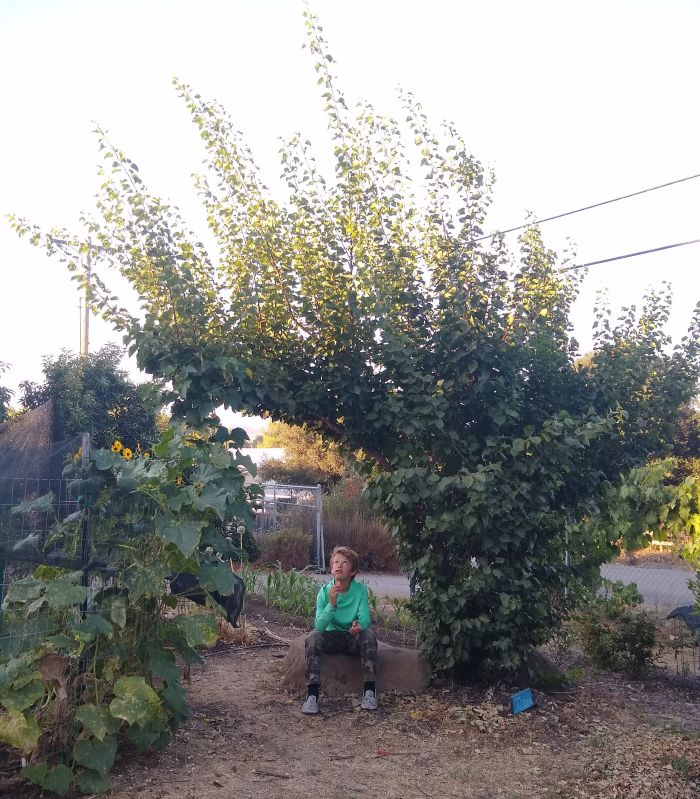
All of my Yard Posts are listed HERE.
Thank you to all Supporters who send in some money to keep these Yard Posts coming and keep the whole website ad-free. If you find The Yard Posts useful, check out how you can support it HERE.

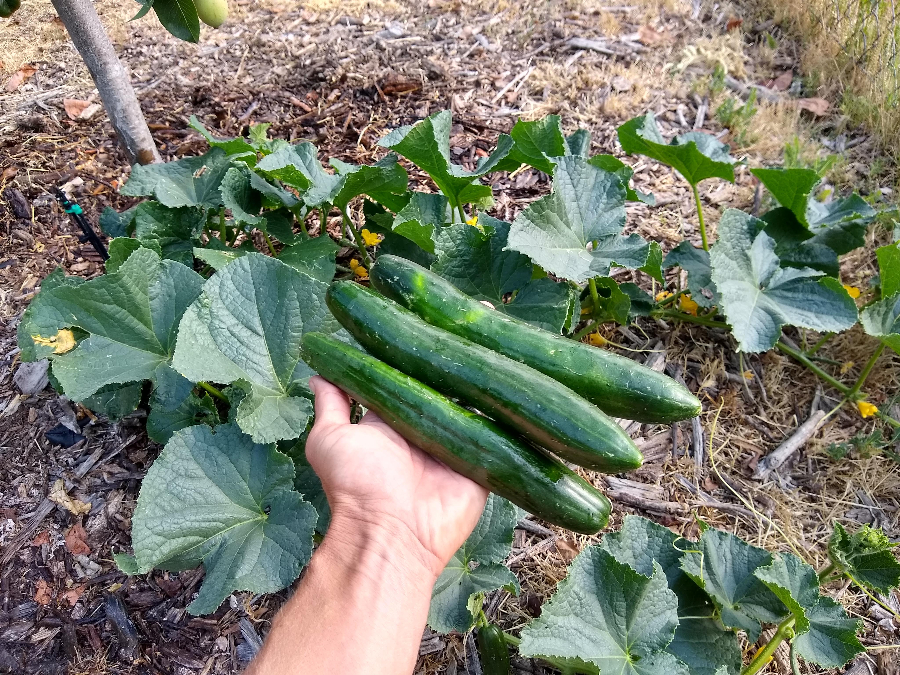


The root knot nematode has been my garden nemesis and I rarely see it brought up. My in-ground space is limited and those guys have made it difficult to grow much successfully in the area I do have. I’ve tried solarizing, beneficial nematodes, neem seed meal, crab shell meal, marigolds grown and turned under, etc. I was able to get a mediocre upo squash patch going after all that, but the plants did have some root galls when pulled. This year I’ve planted only RKN resistant tomatoes and marigolds in that space. Everything else is in containers. Boo to the nematode!
I sure can sympathize, Adrien. Good to know you have gotten the same results from attempts to deal with the nematodes that I have. I’m also growing only resistant tomato varieties in that area this year. So far they’re doing well. I’ll report on the varieties’ performances at the end of the summer. I’m using mostly BHN-1021 and Mountain Fresh Plus.
Otherwise, I’m trying to fallow the garden beds all summer to starve the nematodes. I’ve got most of my vegetables planted elsewhere. Maybe next summer I’ll try just a few nematode-susceptible crops like cucumbers, but I’m expecting it will take a couple years of fallowing to make a real difference.
I saw a presentation where a researcher irrigated a fall themow field with leachate from watering potted tomato plants. The hypothesis was that tomato-root compounds signaled root knot nematode (RKN) eggs to hatch rather laying dormant in the soil for months to years. I don’t remember how impressive the data was but it did support the hypothesis. It helped control RKN population but didn’t eliminate. It also looked like a lot of extra work for a small scale grower.
I’m up in coastal South Orange County. I’m always trying to find solutions to RKN problem. I’ve tried all those you’ve mentioned to no avail. I’ve read (University based research) that planting cruciferous vegetables during the cool season is associated with higher yields in RKN susceptible tomatoes. So, I leave broccoli (heat tolerant Arcadia) growing all the way up to planting time. I mix the broccoli plants into the soil about two weeks before planting seedlings. It’s supposed to be a natural biofumigant. It seems to help keep the population down. I have lots of okra growing and I noticed that the EARLIER I planted the WORSE the okra did. I’m pulling up the early planted now and they are spindly with lots of nodules on the roots. Those planted late, during that hot spell in July 2022 are the best I’ve ever grown. They are stunning. I think that the heat gave the roots a fighting chance against RKN. Next year I’ll plant late. I’m very excited about this.
I have them too. The brandy boy tomato has been a standout for me. I do feel like adding a lot of organic material helps.
Great post! I also bought several Italian cucumber varieties from Cucumber Shop and can’t wait to see if I can grow them. Germination is really high so hopefully I don’t screw it up! Would love to hear which you like best from Jay. His video that you linked to was great. Thank you!
This is Jay. My current favorite is the Striped Carosello Leccese, but the light Leccese, Dark Leccese and a Checkered Leccese that I will hopefully be able to release soon are also extremely good. For round, my favorite is the Tondo Barese. Please let me know if you ever have problems growing anything out. I hope that stewarding these cucumbers honors the lives of those people who developed these varieties. The invaluable seed heritage of the past will likely save us in the future.
Hi Jay – Thanks for your reply! I was so psyched to grow the Facussa since my relatives live in Carloforte on Sardegna. Unfortunately voles or something ate each one as it was growing. So nothing this year. I did have success with the Carosello Leccese Light which we really enjoyed. I bought a lot of the seeds (Tondo Massafrese, Cianciuffo, Painted Serpent) but will have to try again next year. I will look forward to your future offerings and hopefully will recuperate my losses from this season.
What do you do about rats? In my backyard they eat my fruits and vegetables, just nibbling – until they’re ripe, then it’s gobble gobble.
Hey Greg, hope you’re well. I’m currently growing the Green Fingers based on your older article about them. We can’t wait to try them. Thanks for recommendation of others.
Louis,
I go to smart and Final grocery store and purchase a gallon of Louisiana hot sauce for about $6. Then I mix it in a sprayer with half water and half hot sauce. You have to alter the Home Depot brand sprayer. HDX is their brand. Remove the black nozzle and take the white plastic insert out. Then the pump sprayer works great. I do this
Louis, I do this for my tomatoes and young avocados. I spray the young fruit. Rats and squirrels leave them alone. Each spraying lasts about a week or two. Then repeat. Works for these plants. Maybe you can give it a try on your cakes. I would try it on a few to start and see.
Hi Greg, I tried grafting tomatoes to multi-disease resistant (including nematodes) rootstocks this year. Apparently you can do the same for cukes! It definitely wasn’t easy and I only got a 50% success rate, but if it allows me to grow heirloom tomatoes in nematode infested soil it’ll be worth it. 🙂
Thanks, Sarah. I didn’t know anyone had found cucumbers resistant to root knot nematodes. Where have you seen these available?
Great idea about growing heirloom tomatoes on the RKN resistant rootstocks. Please let me know how they do later in the summer.
Sounds like a great sandwich! Have you tried any lebanese/armenian cucumbers? The one I grew this summer doesn’t like the heat, but I’m trying two new varieties soon.
Hi Jessica,
I think I have tried Armenian cucumbers, but it was a long time ago. I’m due to try some again. Let me know if there’s a variety you like that I should try.
Hi Greg, I’m glad I read the comments and the organic pest juice “Louisiana Hot Souce” I’ll give it a try. We live in the San Gabriel foothills and those little guys are feasting on Reed and inground plants.
From up North – I grew lemon cukes this year in a 3′ x 4′ raised bed moistly filled with quality planting mixes and additional pumice and perlite. My mistake was growing yellow, straitneck squash in the same planter. The squash covered the lemon cukes so i had to cut a few the huge squash leaves back to allow the cukes some light. Put some wire fencing from the first raised bed over to a second which was quickly covered with squash and cucumber. Now they both are producing wonderfully and we’re enjoying the harvest. As for tomatoes I put up a vertical 4′ x 5’piece of field fencing and let the cherry tomatoes climb. I have used different varieties with about the same success. Plenty of little tomatoes for snacking and cucumber.squash salads. Thanks for your articles and all the responses. Quite a lot of knowledge here.